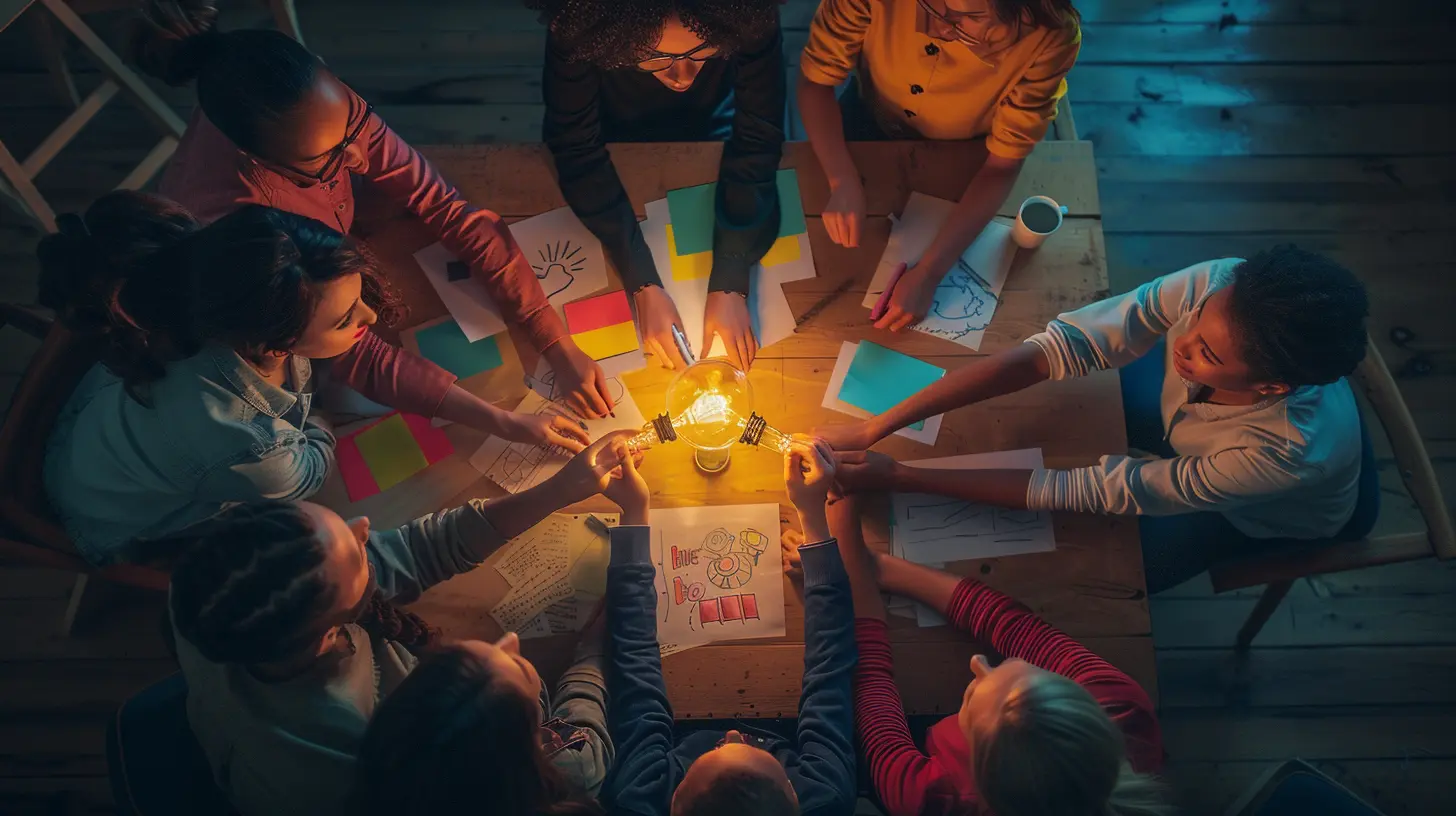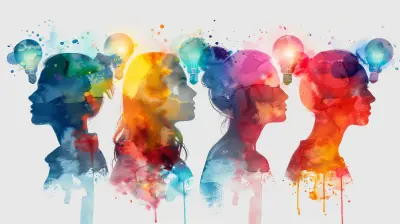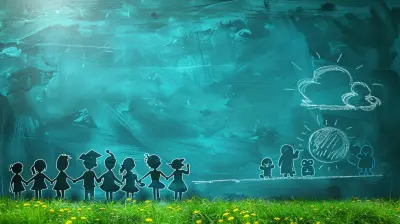Fostering Creativity and Innovation Through Collaborative Group Work
3 July 2025
Let’s be honest: innovation doesn’t come from sitting alone in a corner with your ideas. It’s that spark that flies when curious minds collide. Whether it’s a classroom, college campus, or a brainstorming session at work, collaborative group work is where creativity thrives and innovation is born.
But how exactly do we go from group work that feels like a chore, to a vibrant hub of imaginative ideas and genuine innovation? That’s what we’re diving into today.

Why Creativity and Innovation Matter
Think about the world we live in—it’s fast, it’s competitive, and it's ever-changing. Creativity and innovation aren’t just “nice to have” skills anymore. They're essential. Whether you're solving real-world problems, designing the next big app, or thinking outside the box to write a research paper, being able to think creatively and work innovatively sets you apart.And here’s the kicker: one of the best ways to tap into those abilities? You guessed it—collaborative group work.

What Is Collaborative Group Work, Anyway?
Let’s break it down before we go deeper.Collaborative group work is when a bunch of people come together with their unique skills, backgrounds, and perspectives to work toward a common goal. It’s not just about dividing up tasks and finishing faster; it’s about building something better than any one person could build alone.
Imagine a jigsaw puzzle. Each person holds a few pieces. Alone, they make no sense. But when you pool them together and find where they fit, a bigger, more beautiful picture begins to emerge.

The Creative Power of Different Perspectives
Ever thought about how your idea of a solution can be totally different from someone else’s? That’s the beauty of diversity in a group.When people from varied backgrounds and experiences come together, they bring fresh viewpoints. What you see as a problem, someone else might see as an opportunity. That contrast? That’s where innovation starts.
For example, in a student group tasked with creating a community project, a sociology major might focus on societal impact, while a business student brings managerial savvy. Put together, they create a well-rounded solution that neither could’ve created alone.
So next time you're in a group and someone challenges your idea, don't be defensive—get curious. That tension might just be the birthplace of brilliance.

Creating a Culture of Psychological Safety
Here’s something most people miss: creativity doesn’t bloom in fear. If students or team members are afraid of being judged, laughed at, or dismissed, they’ll keep their best ideas locked inside.That’s why psychological safety is so important. It’s that feeling that says, “Hey, I can be myself here. I can throw out a wild idea and no one will make me feel stupid.”
Building this kind of group culture takes effort. Leaders need to model open-mindedness. Members need to listen to each other without interrupting. And everyone has to ditch the ego at the door.
Because fostering innovation isn’t about being the smartest person in the room—it’s about building a room where everyone feels smart enough to contribute.
The Role of Active Listening
Listen—really listen. Not the kind of listening where you’re just waiting for your turn to talk. I mean listening with curiosity, the kind where you’re soaking in what others are saying and asking questions to dig deeper.Active listening shows respect. It validates the speaker. And most importantly, it opens up creative doors you didn’t even know were there.
In group settings, active listening can turn an “okay” idea into an amazing one, just because someone took the time to build on it thoughtfully.
Collaboration Tools That Boost Creativity
We’ve come a long way from passing notes and scribbling on whiteboards. Today, there are amazing tools designed to make group work not only smoother but more creative.- Mind Mapping Tools like MindMeister
- Project Management Apps such as Trello or Asana
- Cloud-Based Documents like Google Docs for real-time co-editing
- Whiteboard Apps like Miro or Jamboard
These tools allow everyone to contribute, even asynchronously. They eliminate the whole “someone’s hogging the marker” problem and let creativity flow from all participants.
The Magic of Brainstorming Right
Okay, we all know what brainstorming is. But let’s be real—most of us don’t do it right.True, effective brainstorming isn’t about shouting ideas over each other. It’s about embracing all ideas, no matter how weird or “off.” In fact, the weirder, the better.
Set some ground rules for your next group session:
1. No idea is too crazy.
2. Build on each other’s thoughts.
3. Judge nothing during the idea phase.
4. Write everything down—even the bad stuff. You never know what it might spark.
When brainstorming feels more like play than pressure, creativity skyrockets.
Conflict Isn't the Enemy
Hold up. Did we just say conflict is good? Well, sort of.Not all conflict is destructive. Some of it, especially in a group setting, pushes us to re-evaluate, think harder, and refine our ideas. It’s called “productive conflict," and when managed well, it can turn a mediocre idea into a game-changer.
The trick? Keep it respectful. Focus on the idea, not the person. And always circle back to the shared goal.
Conflict doesn't have to be a storm that tears things down. It can be the wind that helps your creative sails catch the breeze.
The Teacher’s Role in Guiding Group Creativity
For educators, facilitating group work isn’t just about grouping students and hoping for the best.Teachers play a key role in setting the tone, providing structure, and guiding students through the messy, magical parts of creative collaboration.
Some strategies for teachers:
- Set clear objectives but allow room for exploration.
- Assign roles to balance participation.
- Regularly check in—but avoid micromanaging.
- Provide feedback that focuses on effort, thinking, and process—not just the end result.
When students feel supported and free to take risks, they push their creative limits.
The Challenge of Unequal Participation
Let’s call it out—some people just like to talk more than others. And in every group, there’s often someone who ends up doing most of the heavy lifting.This imbalance stifles creativity.
So how do we fix it?
- Rotate leadership roles.
- Set norms like “everyone speaks before we decide.”
- Use tools like anonymous idea submissions for shy teammates.
- Encourage peer feedback and reflection.
When everyone feels ownership of the outcome, they contribute more openly—and that boosts the group’s creative power.
Real-Life Examples of Group Work Driving Innovation
Need some proof that collaborative creativity works? Here are a few real-life snapshots:- Design Thinking in Classrooms: Many schools now use design thinking projects where students team up to solve problems in their community. These projects often lead to real-world change, from sustainability initiatives to social awareness campaigns.
- University Labs and Startups: College think tanks and innovation hubs often gather students from different disciplines. Business, tech, and design students collaborate to launch startups or create social enterprises based on shared creative ideas.
- Workplace Ideation Sessions: Companies like Google and IDEO rely heavily on group brainstorming and cross-functional teams to fuel product innovation.
The pattern is clear—gather the right people, give them freedom, and magic happens.
Why Group Work Prepares Students for Real Life
Let’s face it—the “lone genius” is mostly a myth. In the real world, whether it's business, science, healthcare, or art, big ideas come to life through teamwork.Collaborative group work in an academic setting trains students for this reality. They learn to communicate, negotiate, listen, adapt, and lead. These are the very skills that employers crave.
So yes, learning to work in groups is messy and sometimes frustrating. But it’s also one of the best prep tools for real-world success.
Final Thoughts: Creativity Needs a Community
Here’s the simple truth—creativity doesn’t live in isolation. It breathes through collaboration. When students or team members feel heard, respected, and inspired, their minds light up. Ideas that once seemed impossible suddenly feel doable.So whether you’re a student, teacher, or team leader, consider this: collaborative group work isn’t just about hitting deadlines and ticking boxes. It's about creating an environment where creativity takes root and innovation grows.
We don’t just need more ideas—we need better ones. And those are born, more often than not, when people come together.
all images in this post were generated using AI tools
Category:
Group WorkAuthor:

Fiona McFarlin
Discussion
rate this article
1 comments
Orionis Riley
Collaborative group work is essential for fostering creativity and innovation in educational settings. By bringing diverse perspectives together, students can enhance problem-solving skills, share unique ideas, and develop a deeper understanding of concepts. This approach cultivates teamwork and prepares students for real-world challenges.
July 11, 2025 at 3:30 AM

Fiona McFarlin
Thank you for your insightful comment! I completely agree—collaborative group work is vital for enhancing creativity, promoting diverse viewpoints, and equipping students with essential skills for future challenges.


